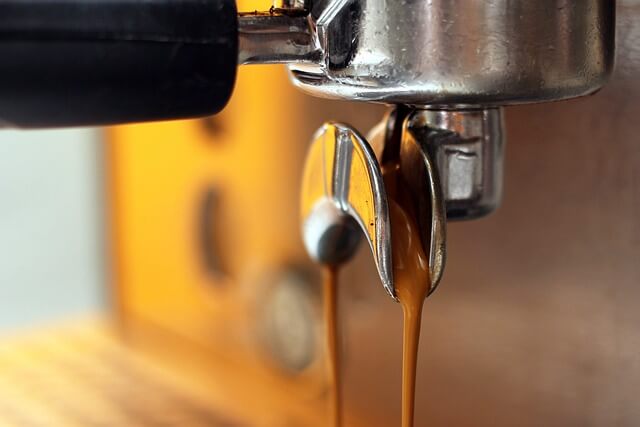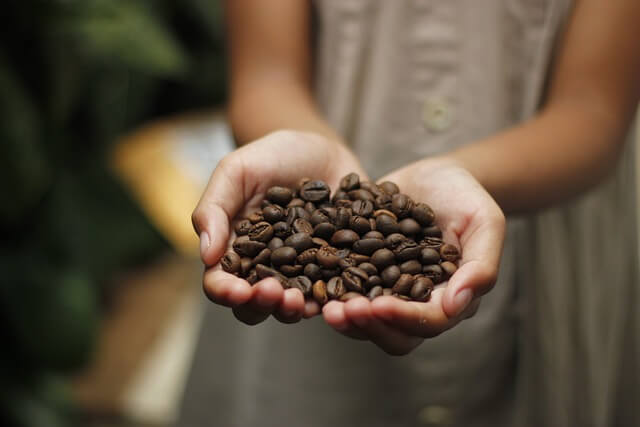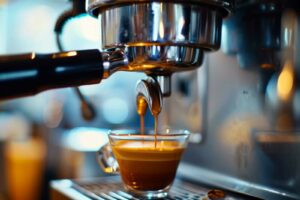You might think you know everything there is to know about espresso. After all, it’s just coffee, right? WRONG. Espresso is a complex beverage with a rich history and an even richer flavor profile. we’ll explore everything there is to know about espresso, from its origins to its modern-day incarnations. By the time you’re finished reading, you’ll be an espresso expert.
The History:
Espresso has its roots in Italy, where it was first invented in the late 19th century. The very first espresso machine was created by Angelo Moriondo in 1884. However, it wasn’t until 1901 that Luigi Bezzera patented his version of the espresso machine, which used steam pressure to force water through finely-ground coffee beans. This method of brewing espresso is still used today!
It didn’t take long for espresso to gain popularity beyond Italy’s borders; in fact, the first espresso machine was imported to the United States in 1906. Initially, espresso was largely confined to Italian immigrant communities in major cities like New York and Boston. However, its popularity began to grow during World War II, when troops stationed in Italy discovered the delicious beverage and brought it back home with them.

How Espresso Is Made
Espresso is made by forcing hot water under pressure through finely-ground coffee beans. The water should be around 200 degrees Fahrenheit and the pressure should be around 9 bars. The quality of the espresso also depends on the grind of the coffee beans. For espresso, the grind should be fine but not too fine, as this can result in over-extraction and bitterness.
What Equipment You Need to Make Espresso at Home
If you want to make espresso at home, you will need an espresso machine and a grinder. There are many different types of espresso machines available on the market, from manual machines to semi-automatic and fully automatic machines. The type of machine you choose will depend on your budget and your level of experience making espresso. For most people, a semi-automatic machine is a good option as it gives you more control over the brewing process than a fully automatic machine does.
How to Make a Perfect Espresso at Home
A good espresso is the foundation of many delicious coffee drinks. If you want to make a great cappuccino, latte, or even just a plain old cup of Joe, it all starts with a quality espresso. Unfortunately, making a good espresso can be tough—but it doesn’t have to be. With a little bit of practice, you can make a delicious espresso right in your kitchen.
Choose the Right Coffee Beans:

The first step to making a great espresso is choosing the right coffee beans. For the best results, you’ll want to use dark roast beans that have been freshly ground. Turkish, Italian, and French roast beans are all good choices. Once you’ve chosen your beans, grind them yourself using a coffee grinder.
Get the Water Temperature Right:
The water you use to make your espresso should be between 195 and 205 degrees Fahrenheit. That might seem like a small range, but it’s pretty important. If the water is too hot, it will scald the coffee and produce a bitter flavor. If it’s not hot enough, the coffee won’t extract properly and you’ll end up with a weak cup of espresso. The best way to get the water to the right temperature is to boil it and then let it cool for about 30 seconds before using it to make your espresso.
Use the Right Amount of Coffee:
If you’re using an espresso machine, most manufacturers recommend using 7-9 grams of coffee per shot. If you’re making a double shot, use 14-18 grams of coffee. If you don’t have an espresso machine and are making an espresso on the stovetop, use 2 tablespoons (10 grams) of ground coffee per half cup (120 ml) of water.
Extract Slowly
Once you’ve added your ground coffee to the filter and tamped it down (more on that in a second), it’s time to start extracting your espresso. If you’re using an espresso machine, start by turning on the brew button and letting it run until your shot glass is full. If you’re making an espresso on the stovetop, slowly pour hot water over the grounds until your cup is full. Either way, you should aim for an extraction time of 20-30 seconds. Any longer than that and your espresso will be over-extracted and taste bitter; any shorter and it will be under-extracted and taste weak.

The Different Types of Espresso and Their Unique Flavors
Espresso is a type of coffee that is brewed by forcing hot water under high pressure through tightly packed coffee grounds. Espresso has a higher concentration of caffeine than regular drip coffee. The flavor of espresso also has different profiles depending on the roast, blend, and origin of the beans used.
Four main types of espresso are popular among coffee drinkers. These four types are ristretto, doppio, lungo, and macchiato. We will explore the taste profiles of each type of espresso so that you can decide which one is right for you.
Ristretto:
Ristretto is an Italian word that means “restricted” or “limited.” This type of espresso shot is made with less water than a traditional espresso shot, but with the same amount of coffee grounds. This results in a more concentrated and intense flavor. Ristrettos often have a syrupy texture and a bitter aftertaste.
Doppio:

Doppio is an Italian word that means “double.” As the name suggests, this type of espresso shot is double the size of a traditional espresso shot. Doppio’s have a weaker flavor than ristrettos because they are diluted with more water. However, doppios are still more flavorful than regular drip coffee.
Lungo:
Lungo is an Italian word that means “long.” This type of espresso shot is brewed for a longer period than traditional espresso shots, resulting in more water passing through the ground coffee beans. Lungo has a milder flavor than ristrettos and doppios because they are more diluted. However, lungo still has more caffeine than regular drip coffee because the grounds are steeped for a longer period.
Macchiato:
Macchiato is an Italian word that means “marked” or “stained.” This type of espresso incorporates milk into the mixture, resulting in a sweeter flavor. The milk dilutes the concentration of espresso, making it less intense than a traditional espresso shot. Macchiatos also tend to have a foamy texture due to the incorporation of milk into the mix.




